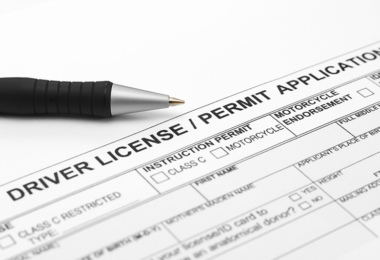Status of GDL programs and driver education
Graduated driver licensing. During the past ten years there has been a sizeable decrease in overall crashes involving drivers aged 15 to 20, however, these benefits are not as evident for those on the older end of this age group. The success to date in implementing elements of graduated licensing has been laudable, but important gaps remain. Concerted efforts are needed to determine the optimal provisions necessary to strengthen each state’s GDL system.
In 2016:
- all 51 jurisdictions in the U.S. require a minimum age of entry and a learner’s permit phase;
- 50 jurisdictions have night driving restrictions;
- 45 jurisdictions have passenger restrictions; but,
- specific safety measures and provisions vary by jurisdiction.1
Between 1995 and 2015:
- across jurisdictions there were 159 instances of states adding or strengthening learner holding periods, supervised hours requirements or night passenger restrictions.1
Since 2010:
- jurisdictions have pursued few changes, even though in every state there is potential to achieve further and substantial crash reductions among young drivers.
Current teen driver laws for each U.S. jurisdiction are described on the Insurance Institute for Highway Safety’s (IIHS) website: http://www.iihs.org/. The IIHS website also includes an online calculator to estimate, for each jurisdiction, the safety effects of strengthening or reducing the following five licensing provisions: permit age, practice driving hours, license age and night driving and passenger restrictions.
Driver education. Historically, driver education has operated independently of GDL programs, providing an effective way to educate young drivers about the rules of the road, in addition to knowledge, attitudes and skills to properly operate a vehicle in a variety of roadway environments. Although past evaluations have reported results that often challenged its safety benefits2, a few recent studies suggest that driver education continues to demonstrate promise for reducing teen crash rates.3
Recent developments to improve driver education and encourage parental involvement have also occurred.
- In an effort to enhance the quality and uniformity of driver education programs across the U.S., the National Highway Traffic Safety Administration (NHTSA) funded a series of projects designed to improve the quality, consistency and delivery of driver education programs and to create appropriate tools to inform and guide state initiatives to improve such programs.
- A broad cross-section of experts representing different disciplines was engaged in this work to provide jurisdictions with the most current research and practice regarding this priority road safety issue.
- An association of major stakeholders, known as the “Association of National Stakeholders in Traffic Safety Education” (ANSTSE), was established in 2010.
- The Association, with the support of NHTSA, has developed the National Teen Driver Education and Training Administrative Standards (NTDETAS), which combines the outputs from the various projects to create this single resource for jurisdictions.
- The NTDETAS were published in 2009 and a new revision of the standards is now available for 2017 (www.anstse.info).
- The revised NTDETAS provides enhanced standards including sections on classroom and behind-the-wheel delivery standards as well as on online delivery standards, which are specific to the delivery of driver education using online, web-based programs.
- These standards also encourage parental involvement in driver education and provide standards for supervised driving practice, a parent seminar, parent progress reports and parent resources.
GDL and driver education co-exist but they are seldom integrated. There are potential safety benefits from better integrating and enhancing these safety measures.





